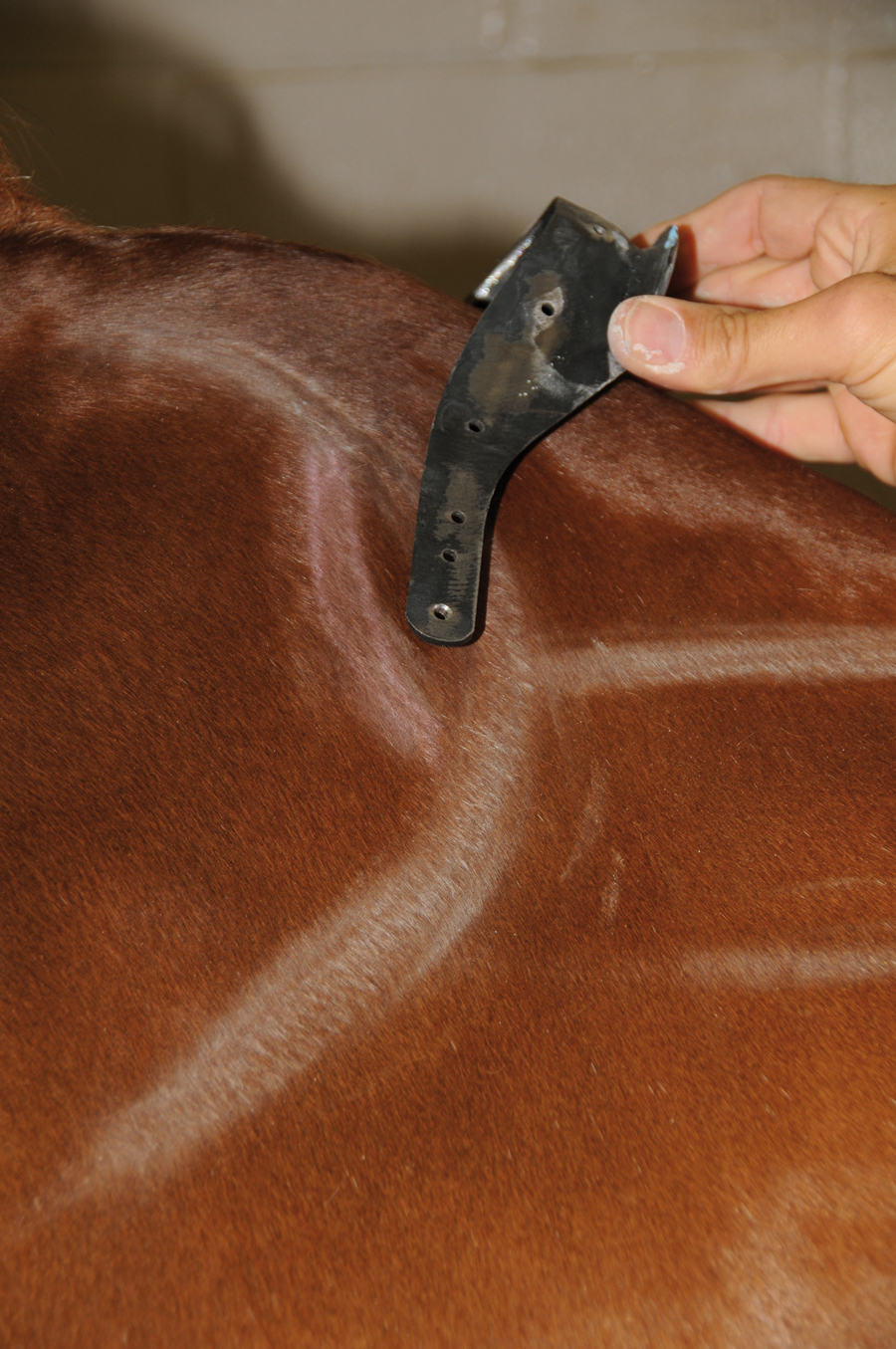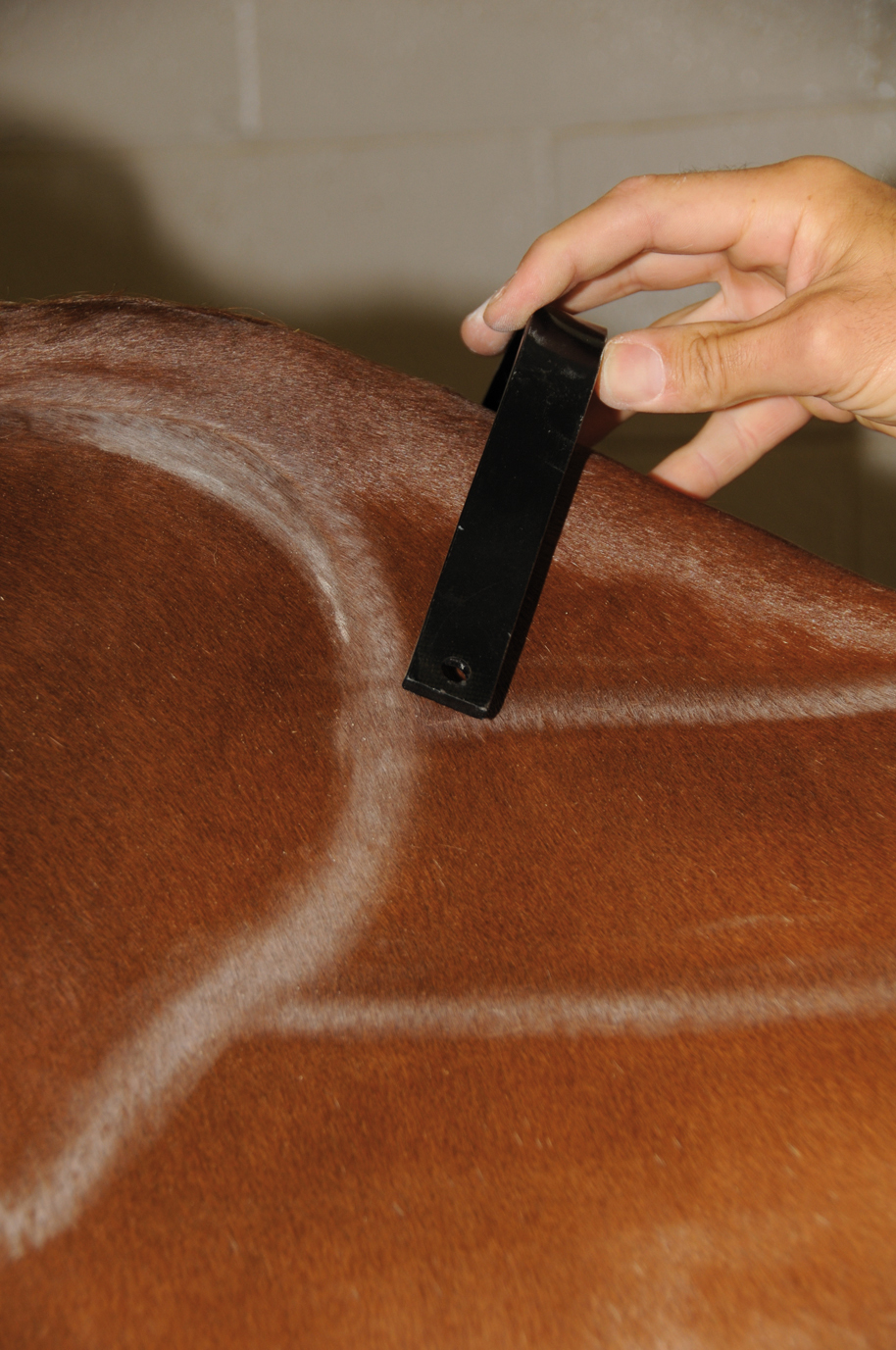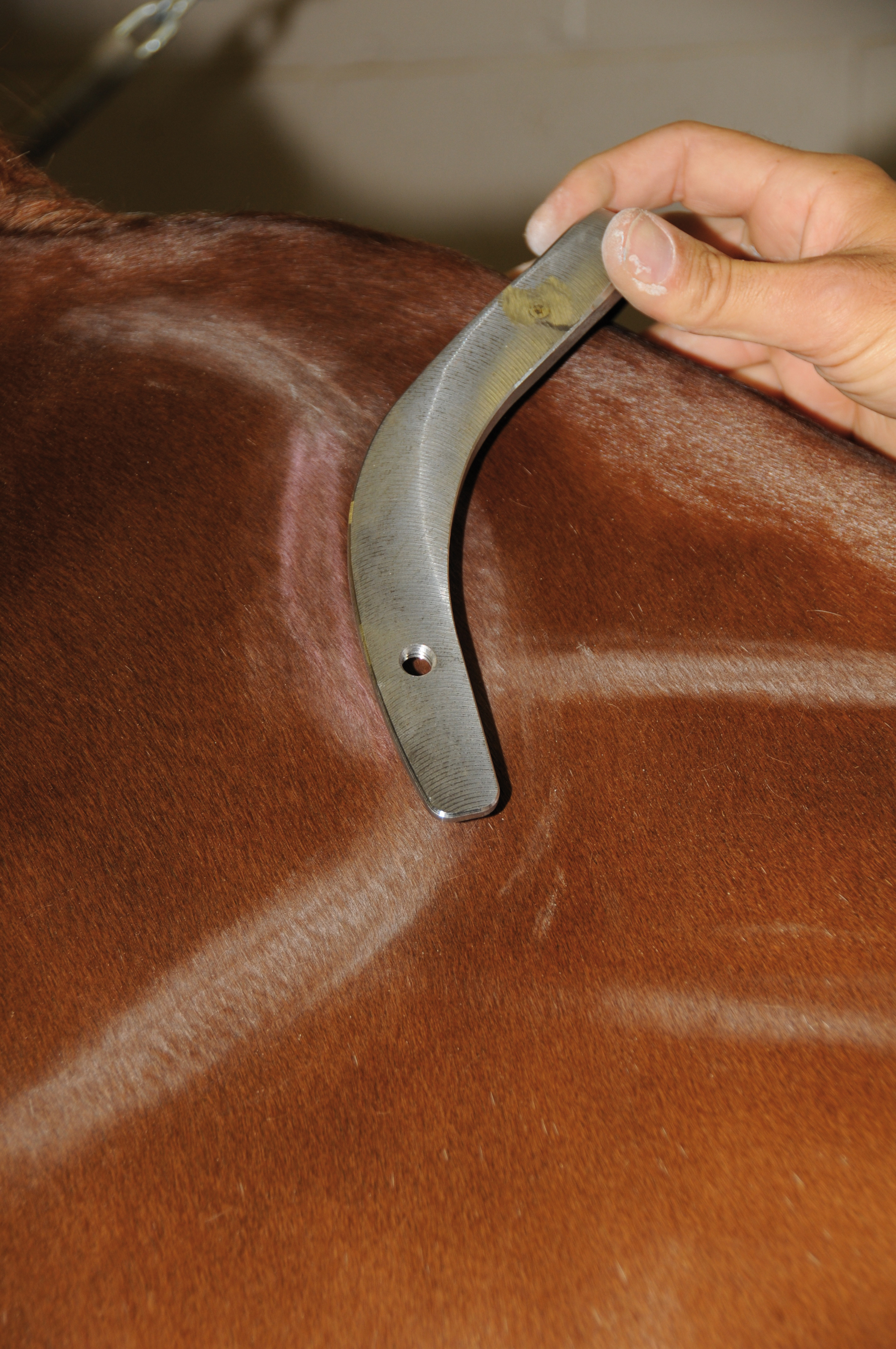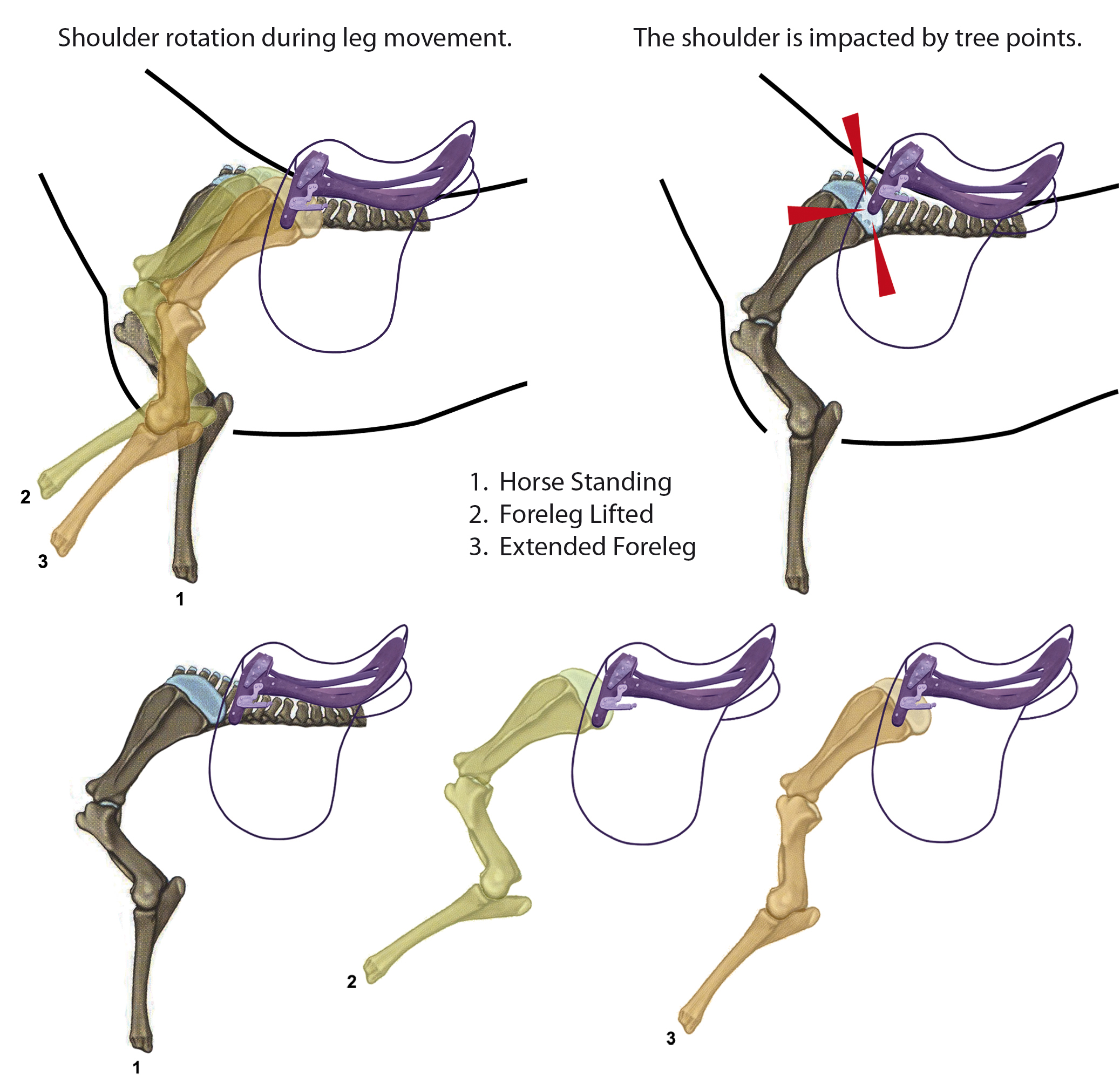Saddle Fit and Tree Points: Impacting Scapular Health
Saddle Fit and Tree Points: Impacting Scapular Health
There are so many saddle companies on the market today; it seems that every month another new one is launched. Some of them seem to have ‘gotten it’ and have made some crucial design changes to truly accommodate equine anatomy as per the Saddlefit 4 Life philosophy to at least try to protect the horse from long term back damage, but there are still too many ‘doing it the way it’s always been done’. The materials may have changed from the traditional English spring tree with its riveted gullet and layers of laminated wood to incorporate titanium, polyurethane, or other chemical compositions, but unfortunately some of the changes made (or not made) are not necessarily always positive. Too many tree points are still either too short (digging right into the trapezius) or still facing forward (impacting the sensitive cartilage on the tip of the scapula). Saddle tree points (direction, angle and width) are critical in their impact on equine scapular health.


Tree points are either forward-facing, straight (perpendicular to the ground) or rear-facing. They are usually relatively long (as in olden days) but some saddleries are now coming out with shortened tree points as their latest innovation. Forward facing tree points have proven detrimental effects to shoulder health. MRIs and fibre optic cameras have shown the cartilage chipping that can occur as scapula rotate upwards and backwards when the horse starts moving. Every time the foreleg is extended (during trot, gallop, and of course simultaneously when jumping) tree points will hit the scapulae, potentially causing damage at the skeletal level. In some countries the manufacture of these saddles with traditional forward facing trees has been banned completely in recognition of the potential damage caused.

Straight tree points are marginally better, but still contact at the scapula, especially during extended movement of the leg or during jumping. Rear-facing tree points, which mimic the scapular angle allowing maximum freedom of shoulder movement – both in the upwards and backwards motion – provide optimal scapular clearance and health. This is clearly illustrated in the accompanying drawing below. But having the right tree points is just the start – they have to mimic the angle of the shoulder to allow freedom of movement ‘through the saddle’ like a sliding door when the horse is in motion. Ideally, they should also be adjusted to ensure that especially the larger shoulder (usually the left) is not pinched. If the gullet plate (which ends at the tree points) cannot be adjusted asymmetrically, then it should at the very least be fitted to accommodate the larger shoulder and the panel stuffing flocked accordingly or shims used to ensure that the smaller shoulder also fits.

You can check this on your own horse by lifting the foreleg, hold the leg doing a ‘pedalling’ motion to see how far the scapula rotates (usually 4-8”) marking the shoulder positions with chalk. If during movement, the horse’s scapulae hit an immobile, hard edged object (the tree point), the uncomfortable results are irritation, restricted movement, pain and eventual cartilage damage (similar to a person walking and banging their knees against a wooden board with every step – not painful at first, but the cumulative effect – knee damage).
Tree width and angle are just two of the 80 points analyzed in on-site Saddlefit 4 Life® Diagnostic Evaluation. Personal saddle fit sessions include saddle fitting to the biomechanics of movement, horse and rider evaluation, saddle support area analysis, saddle fitting adjustments, recommendations, demonstrations and educational programs by Saddlefit 4 Life® – protecting horse and rider from pain and long-term damage.
www.saddlefit4life.com www.saddlesforwomen.com
©2016 Saddlefit4Life® All Rights Reserved.
